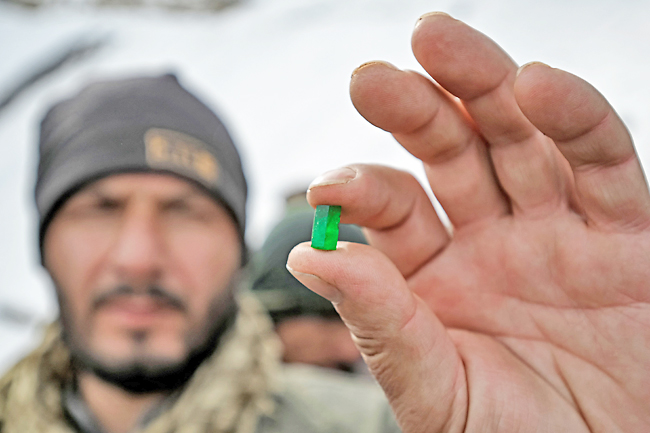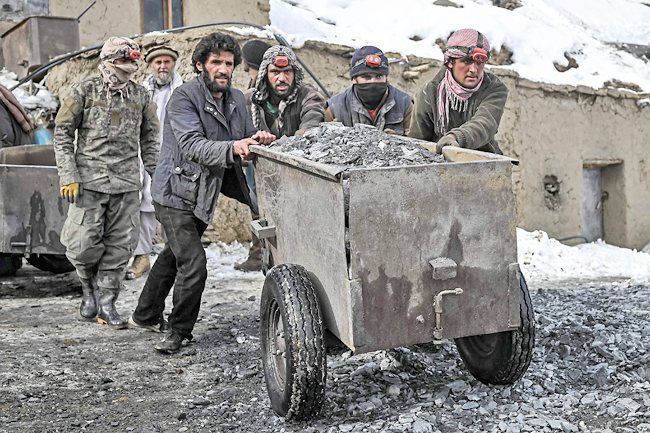MIKENI, AFGHANISTAN (AFP) – In the bone-splitting chill of the Afghan mountains, Mohammad Israr Muradi digs through coarse earth spilling from the open mouth of an emerald mine.
With an improvised sieve and a few splashes of water, the former police officer scours a slag heap for fragments of the green gemstone, swarmed by dozens of others vying for the same prize.
Measured in a dusty open palm, the emerald pieces, pried from the bowels of the Mikeni Valley 130 kilometres northeast of Kabul, are no bigger than peanuts.
But they are just about enough to assuage total poverty in a nation mired in humanitarian catastrophe.
“The emeralds we find, we sell them for AFN50, AFN80, AFN100 or AFN150 (between 50 US cents and USD1.5),” Muradi said.
He was once head of the anti-terrorism police in neighbouring Paryan district.
Unemployed when the Taleban overran Kabul in mid-August, he initially tried his hand as a secondhand clothing salesman on the streets of the Afghan capital.



“It didn’t work out,” said the 25-year-old. Without any source of income, he was “forced” to head for the hills.
Echoing booms roll across the valley, 3,000 metres above sea level, as blasting teams carve out shafts crisscrossing the innards of the mountains.
Locals have known about the presence of emeralds in Panjshir province for thousands of years.
Systematic mining only began in the 1970s and remains largely artisanal, but the gems found here are compared to Colombian emeralds, the most sought-after on the planet.
Each shaft is co-owned by several dozen partners and manned by a team of about 10 miners, digging lengths of more than 500 metres in search of glimmering veins of quartz.
But the last workers to arrive at the camp are relegated to the thankless, tedious and low-paid work at the mine entrances, where rickety trolleys tip out mounds of rubble.
It is a far cry from the decent job 27-year-old Gulabuddin Mohammadi previously had earning AFN35,000 (USD340) per month in the now defunct army.
The mines are a two-hour hike from the bottom of the valley up precarious paths of grimy ice, cresting at a mud hut village supplied by donkeys and powered by petrol generators.
But its far-flung location is part of the attraction for Mohammadi, a seven-year veteran who was looking for sanctuary when the army crumbled as US troops withdrew in August.
Many former soldiers and police officers have come here to eke out a living while evading potential reprisals for their roles in the previous Western-backed regime.
The Taleban have publicly proclaimed an amnesty, but human rights groups warn more than 100 people from those groups have been executed or “disappeared”.
But for the moment, the squalor of the camp seems like the greatest injustice on Mohammadi’s mind. “We are treated like cattle,” he sighed.
“We have no real place to live, we are in tents. We have no water, no fire, no clinic if we
get sick.” The withered Afghan economy means he has little choice of how else to feed his 25 family members.
Since their chaotic withdrawal, Western powers have frozen billions of dollars in overseas Afghan assets and aid, which propped up the country.
The mountainous redoubt of Panjshir has historically been a nest of resistance against
outside forces.






